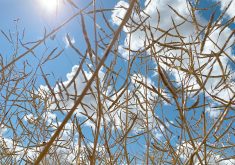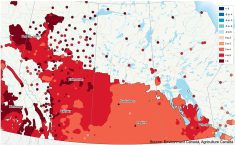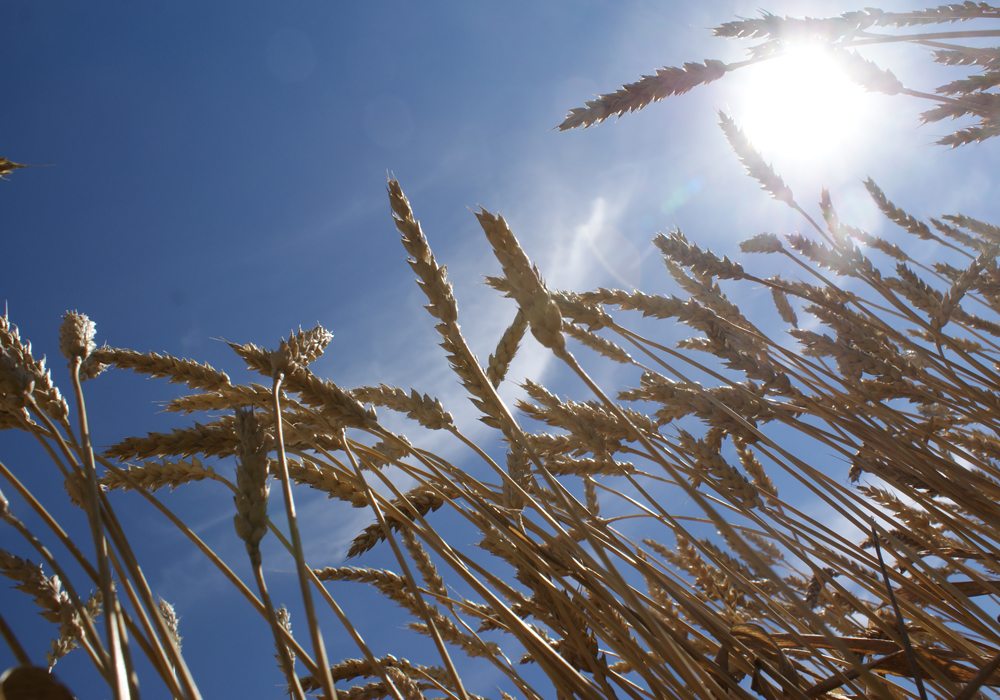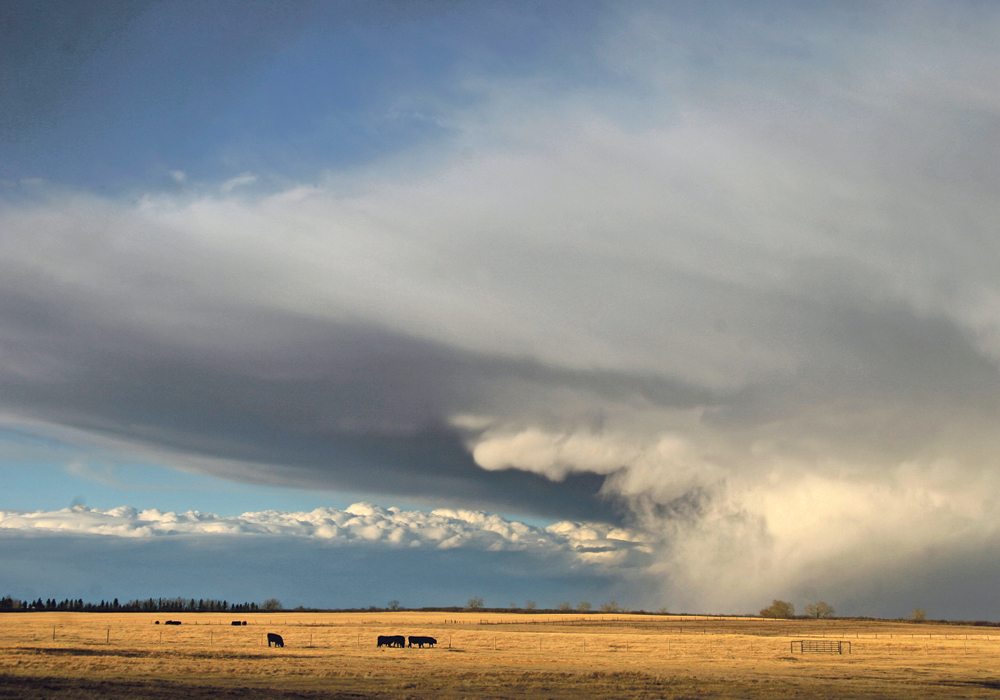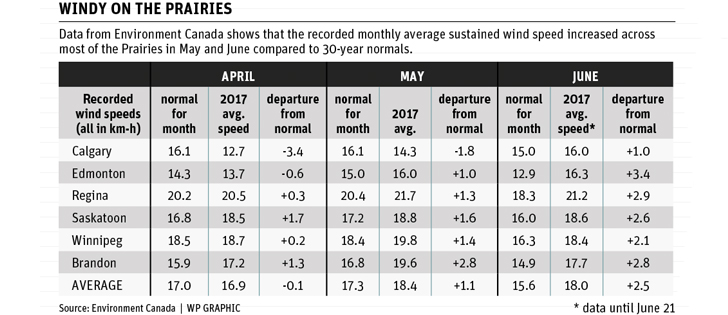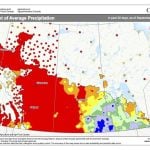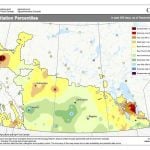Rain and cooler temperatures broke a three-week prairie heat wave July 15, but many growers still don’t know how badly their crops were damaged.
However, most observers believe winter wheat is one crop that withstood the searing heat.
Jake Davidson, executive director of Winter Cereals Canada, said most winter wheat fields were thriving before the heat wave, which helped the plants tolerate three weeks of minimal rainfall and temperatures near or higher than 30 C.
“If the crop was far enough along, this (the heat) was just going to speed things up,” Davidson said.
Read Also
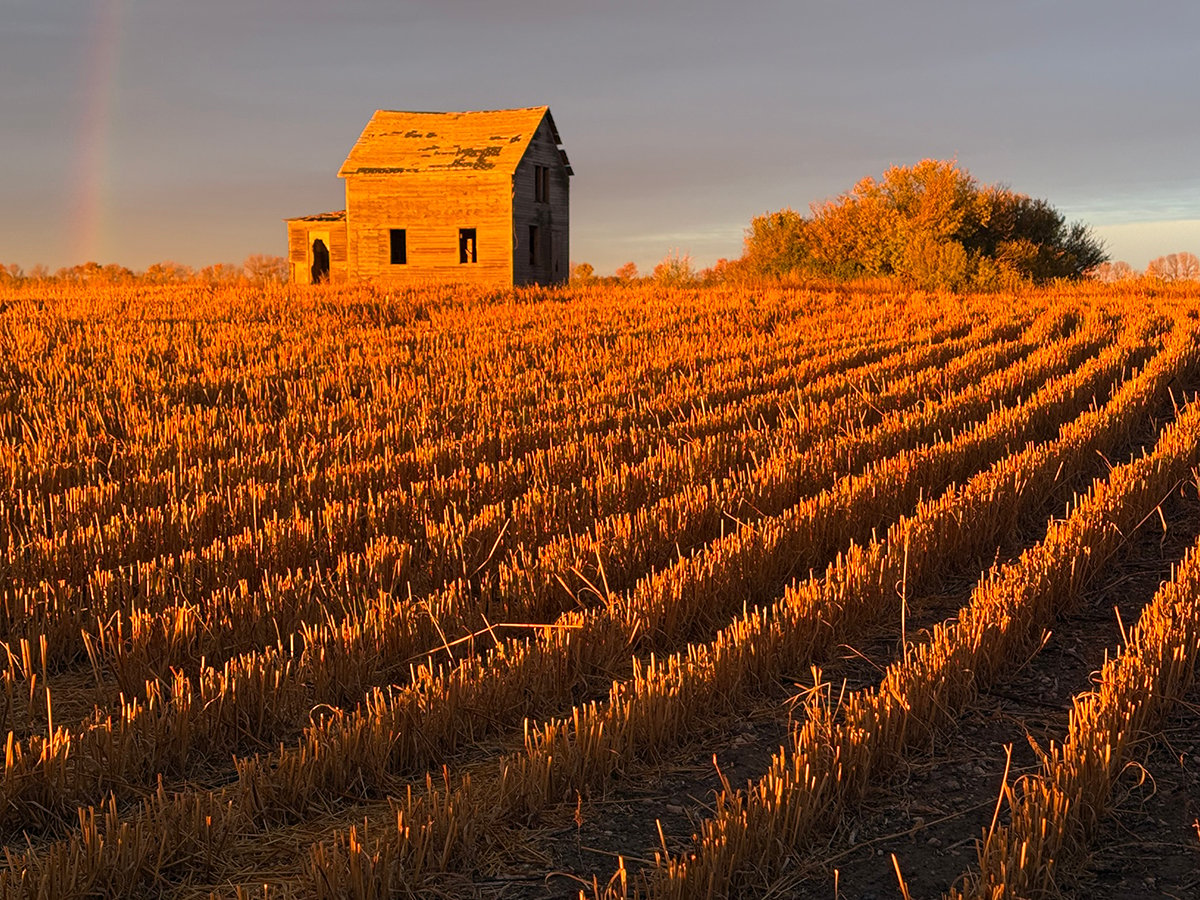
Forecast leans toward cooling trend
July saw below average temperatures, August came in with near to slightly above average temperatures and September built on this warming trend with well above average temperatures for the month.
The average daily high in Winnipeg from July 1-15 was 29.3 C, compared to the normal daily high for July of 25.8 C.
In southeastern Saskatchewan, the average daily high in the first half of July was 28.5 C, compared to the normal average daily high in Estevan, Sask., in July of 26.5 C.
Although a few light showers would have been helpful, three weeks of 30 C didn’t harm Rick Rutherford’s 400 acres of winter wheat northwest of Winnipeg.
“I think we haven’t seen any reduction in yield,” he said. “We were very moist, almost to the point of excessive moisture three weeks ago. So I think we (had) enough moisture to carry it on the ground we have it on.”
Rutherford said the winter wheat crop in Manitoba still looks very good to excellent, based on what he’s heard from other producers.
In June, Manitoba growers thought fusarium head blight might be a problem this year because the winter wheat crop was wet during flowering. However, a stretch of warm and drier weather in late June alleviated the fusarium threat.
The heat also accelerated the winter wheat’s maturity. Rutherford expects to combine the crop around July 22, about a week earlier than normal on his farm.
Rod Fedoruk, who farms near Kamsack, Sask., said most winter wheat in his area look healthy, despite a wet June followed by a hot, dry July.
“The (crops) that I’ve seen, in my short travels around the area, they look very good,” said Fedoruk, who grows 120 acres of winter wheat.
His crop is going into the dough stage and he expects to combine it in early August.
Fedoruk planted winter wheat on marginal land, so yield will likely be average. However, he said other winter wheat crops in the region will likely produce above average yields.
Prairie producers will harvest 1.3 million acres of spring wheat this year, 1.16 million of them in Manitoba and Saskatchewan.






